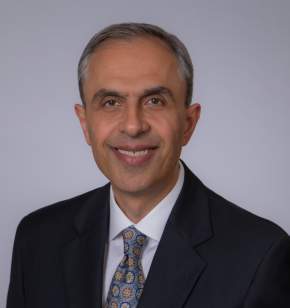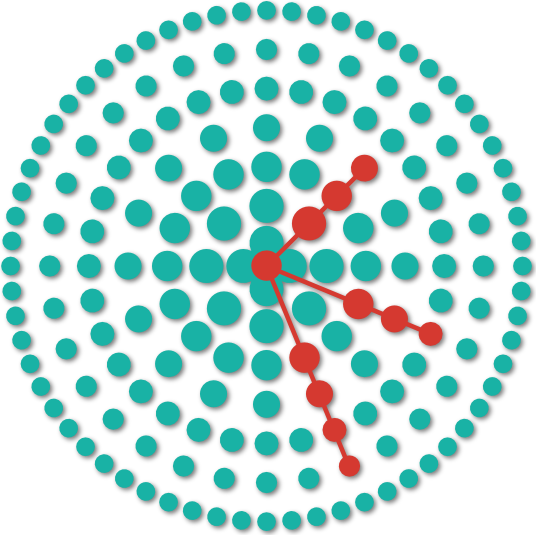Observation of Glioma

In patients with diagnosed glioma, treatment strategies vary depending on the type, size, location, and grade of the tumor. Patients with small, low-grade tumors, or those with gliomas in high-risk areas of the brain may consider observation.
When Should Observation Be Considered for Glioma?
Generally, surgery is usually the initial course of treatment for patients with glioma for two reasons:
- Determination of the exact grade of the tumor so that appropriate follow-up radiation and/or chemotherapy treatments are selected and instituted
- Maximal safe tumor removal to enhance survival
However, observation without any therapy may be chosen in very rare and select cases when the tumor is relatively benign appearing on the MRI, small, and located in high-risk areas where surgery may cause loss of function and threaten a patient’s health-related quality of life. It is crucial that patients undergoing observation therapy see their neurosurgeon for regular follow-up visits and MRI scans every 6, or 12 months to make sure that any change in the tumor is detected in a timely fashion.
Patients may elect to switch to surgical intervention and should re-evaluate treatment options with their care team if any of the following are observed:
- The tumor significantly increases in size on MRI
- Development of symptoms, or worsening of pre-existing symptoms that negatively impact the patient’s quality of life
- The tumor appears to become more aggressive as it starts growing more quickly and demonstrates new changes on MRI (uptake of contrast on imaging that was not present previously)
What Types of Glioma Are Best Suited for Observation?
WHO Grade I, Pilocytic astrocytoma is a benign glioma. It typically occurs in children in the cerebellum or brainstem and occasionally in the cerebral hemispheres.
Observation is recommended for small tumors without symptoms and tumors located in highly functional/inoperable areas, such as the brainstem. These low-grade tumors may grow slowly or stop growing altogether for some time.
WHO Grade II, Low-grade glioma includes astrocytoma, oligodendroglioma, and mixed oligoastrocytoma. Recurrence is highly likely to occur due to the infiltrative nature of these tumors. Grade II tumors can recur and transform into more aggressive tumors such as WHO grade III or IV.
Observation is recommended for small tumors located in high-risk areas that may lead to loss of function following surgical intervention. While some grade II tumors may not progress, others may enlarge and transform into high-grade tumors requiring more aggressive treatment, such as surgery. A needle biopsy is often needed to confirm the grade of the tumor and guide radiation and chemotherapeutic options.
WHO Grade III, Malignant glioma includes anaplastic oligodendroglioma, anaplastic astrocytoma, and anaplastic mixed oligoastrocytoma. Compared to grade II tumors, grade III tumors grow faster and more aggressively. Surgical resection is challenging and complete removal is not possible as these tumors commonly invade nearby normal healthy brain tissue.
Observation is unlikely to prolong length of life; however, observation may be appropriate in cases where patients are not fit to undergo surgery or other treatment options. Additionally, observation may be an option to maximize quality of life in instances where the condition is considered unfortunately terminal.
WHO Grade IV, Glioblastoma (GBM) is a malignant glioma. GBM usually spreads quickly and invades other parts of the brain with tentacle-like projections, making complete surgical removal more difficult.
Though observation is unlikely to prolong length of life, there are cases in which it may be appropriate. Observation may be an option to maximize quality of life among patients whose cases are considered terminal and are not fit to undergo surgery or other treatments.
A non-surgical strategy is a reasonable option for tumors that cannot be safely removed in significant amounts via surgery to provide a survival benefit for the patient. In these cases, a biopsy and radiation/chemo is reasonable.
Why should you have your surgery with Dr. Cohen?
Dr. Cohen
- 7,500+ specialized surgeries performed by your chosen surgeon
- More personalized care
- Extensive experience = higher success rate and quicker recovery times
Major Health Centers
- No control over choosing the surgeon caring for you
- One-size-fits-all care
- Less specialization
For more reasons, please click here.

Figure 1: Illustration of a left frontal glioma. This tumor type originates within the brain.
What Are the Risks and Benefits of Observing a Brain Tumor?
Benefits
Tumors that are slow-growing and unlikely to spread may not cause symptoms for many years. Observation may be the best option for these patients with low-grade gliomas, rather than alternative and more aggressive treatment options which can cause side effects. Additionally, observation allows patients to maximize quality of life until a point is reached where further treatment is needed.
Risks
Observing a brain tumor may cause an additional emotional impact on the patient and their family members. Living with a brain tumor and without pursuing active treatment until it grows bigger, or becomes more aggressive, can be upsetting and frightening. Follow-up appointments may cause anxiety associated with the reality that the condition has progressed. Lastly, delaying more aggressive treatment methods may allow a tumor grow, progress to a higher grade, and reduce efficacy of future treatment attempts in the future.











